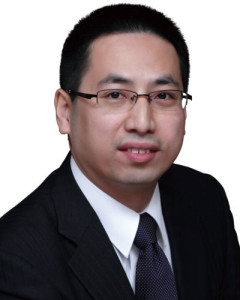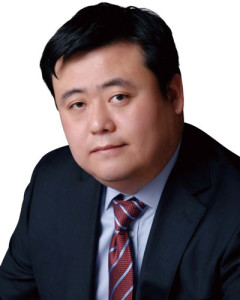Patent claims are written expressions of solutions for which protection is requested. Due to the nature of the written language, it is impossible to avoid the occasional human error. When an international Patent Cooperation Treaty (PCT) enters the national stage in China, translation errors are even more difficult to avoid. There are numerous reasons that can result in errors in claims for which rights are ultimately granted. In judicial practice, Courts have consistently faced the issue of how to deal with obvious errors in the expression of technical features in patent claims. As documents for a granted patent are subject to public disclosure, the court cannot permit the holder of the same to make any further alterations to claims.

Patent Attorney
Sanyou Intellectual Property Agency
So, the key to winning in a patent infringement suit is ensuring that the judges correctly understand claims containing errors. After an actual case in which they were involved, the authors of this article propose to address the issue of applicable standards involved in the correct understanding of claims with errors in the hope that readers can conduct a broader and more extensive discussion of this issue.
Company A, headquartered in Spain, is an innovative international enterprise with a history of more than 50 years. It is active in the research and development of dipper teeth, connectors, protective covers and locking devices used in the earth-moving machinery sector. Company A discovered that Company B was suspected of producing and selling excavator accessories infringing the former’s invention patents. The appointed agent of Company A effected notarized purchases of the said products and secured the relevant evidence. After being engaged by Company A, the authors officially instituted a civil patent infringement suit with the court in May 2016, demanding that Company B immediately cease the infringement and pay the related compensation.
This case involved an invention patent dispute. There was an obvious typographical error in the claims for the patent in question (and also an error in the corresponding expression in the disclosed international PCT document), resulting in the meaning of the technical feature in question being the exact opposite of what was actually meant. The focal point in this patent infringement suit was mainly on whether the court had the authority to render a corrective interpretation of an obvious error in the claims. The specific trial process fully demonstrated judicial wisdom in making the case a model.

Patent Attorney
Sanyou Intellectual Property Agency
Article 4 of the Interpretations of the Supreme People’s Court of Several Issues Concerning the Application of the Law in the Trial of Patent Infringement Disputes (2) specifies that, “if there exists a discrepancy in terms of the grammar, language, punctuation, figures, symbols, etc. in the claims, description and figures, but a person skilled in the art could derive a single understanding thereof by reading the claims, description and figures, the People’s Court shall render its finding based on such single understanding”. However, as the typographical error in this case did not fall within the category of a “discrepancy”, the question of whether it could be applied to this provision was still a matter for open debate.
During the trial, the authors expounded on the following points. First, they asserted that a corrective understanding of the obvious error in the claims was a beneficial supplementary measure for the existing patent system. The court needed to accord it a corrective understanding in the adjudication procedure as this was in keeping with the original intent of establishing the patent system. Second, through a detailed exposition of the solution for the patent, we were able to show that, in light of the description and the figures, it was possible to derive comprehensively the sole and correct understanding of the obvious language error. Last, the authors searched and provided to the court certain effective judgments as reference, all of which used the judgment standard for similar language errors stating that, “if a person skilled in the art could derive a single understanding by reading the claims, description and figures, then a corrective understanding can be arrived at, and if not, then not”.
The court ultimately accepted the authors’ arguments and supported the claims in the suit. Following the hearings, the court held that, pursuant to the patent law and related judicial interpretations, “the scope of protection of an invention or utility model patent is determined by the content of the claims, while the description and figures may be used to explain the claims”. Indeed, there was an error in the language of the claims for the invention patent in the case, but, with comprehensive consideration of the description and the figures, a person skilled in the art could arrive at a corrective understanding and revision. On this basis, the court found that Company B’s manufacturing and sale of the products in question constituted a patent infringement and it should bear the attendant liability for the same. It ordered Company B to compensate for Company A’s economic losses and reasonable expenses in the amount of several tens of thousands of renminbi.
In a patent infringement suit, the court can arrive at a corrective understanding of an obvious error in the claims, but it should be noted that doing so requires strict application criteria and limitations. It is not permissible to ignore all errors because that would dampen inventors’ zeal for invention, but it is equally not permissible to apply corrective understanding indiscriminately, as that would cause the predictability of the boundaries of patent rights to vanish. Additionally, such persons as patent holders, patent agents and examiners need to pay attention to enhancing their standards for reviewing and the attention they pay to patent documents, to avoid such obvious errors before the patent grant stage. Only in this way can the objective of establishing the patent system, namely “disclosure in exchange for protection”, be realized to the greatest extent possible and the public availability, stability and authority of granted patents be genuinely maintained.
Chen Jian is a patent attorney at Sanyou Intellectual Property Agency and is the director at Wan Rui Law Firm. Geng Yunfeng is a patent attorney at Sanyou and is an associate at Wan Rui
北京市西城区金融街35号
国际企业大厦A座16层 邮编: 100033
16/F, Block A, Corporate Square
No.35 Jinrong Street, Beijing 100033, China
电话 Tel: +86 10 8809 1921 / 8809 1922
传真 Fax: +86 10 8809 1920
电子信箱 E-mail:
sanyou@sanyouip.com
chenjian@bjwrlaw.com
yunfenggeng@bjwrlaw.com






















